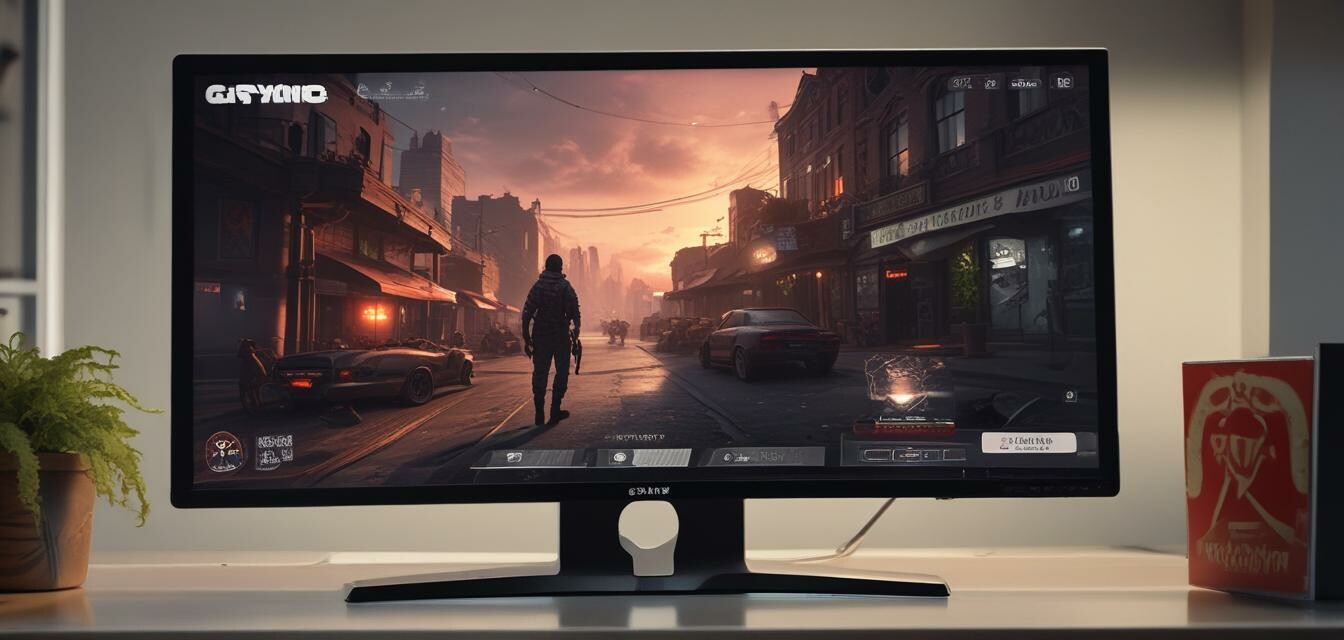
How to Optimize Settings for Your G-Sync or FreeSync OLED Monitor
Key Takeaways
- Understanding G-Sync and FreeSync technology can enhance your gaming experience.
- Proper monitor settings, including resolution and refresh rates, can greatly impact performance.
- Different game types may require specific adjustments for optimal graphics and gameplay.
- Regularly updating your GPU drivers ensures the best compatibility with your monitor.
When it comes to gaming, having the right monitor settings can make all the difference. G-Sync and FreeSync technologies represent an exciting advancement in display technology, aiming to provide a tear-free gaming experience. This guide will walk you through how to optimize settings on your G-Sync or FreeSync OLED monitor, ensuring you get the best performance possible. We’ll look at essential adjustments for various game types and configurations.
Understanding G-Sync and FreeSync
Before we dive into optimization, let’s clarify what G-Sync and FreeSync are:
| Feature | G-Sync | FreeSync |
|---|---|---|
| Developed by | NVIDIA | AMD |
| HDMI Compatibility | Limited support | Wider support |
| Requires specific hardware | Yes | No |
| VRR Range | Typically 30Hz to 240Hz | Varies based on monitor |
Steps to Optimize Your Monitor Settings
Step 1: Update Your Graphics Drivers
The first step to ensure your G-Sync or FreeSync monitor is performing optimally is to update your graphics card drivers. Outdated drivers can prevent your monitor from leveraging its capabilities fully.
Step 2: Configure G-Sync or FreeSync in Graphics Control Panel
Once your drivers are updated, you need to make sure G-Sync or FreeSync is enabled:
- For G-Sync:
- Open NVIDIA Control Panel.
- Go to the Display tab.
- Select Set up G-Sync.
- Check the box to enable G-Sync.
- For FreeSync:
- Open AMD Radeon Software.
- Go to Display settings.
- Find the FreeSync option and enable it.
Step 3: Adjust Monitor Settings
Now that you have G-Sync or FreeSync enabled, let’s adjust your monitor settings:
| Setting | Recommended Value | Notes |
|---|---|---|
| Refresh Rate | 144Hz | Higher refresh rates provide smoother gaming experiences. |
| Resolution | 1920 x 1080 (or higher) | Choose a resolution that balances performance and image quality. |
| Adaptive Sync | Enabled | Allows the monitor to synchronize its refresh rate with the game’s frame rate. |
| Response Time | Lower is better (1ms - 5ms) | Faster response times reduce motion blur. |
Step 4: Game-Specific Settings
Different types of games may require different settings. Here’s a breakdown:
- Competitive FPS Games: Focus on lower input lag and higher refresh rates.
- Disable any post-processing effects that may slow down performance.
- Single-Player Games: Prioritize graphics settings.
- Increase details and effects; adjust according to performance.
- RPGs: Balance settings for immersion and performance.
- Fine-tune the settings visually while keeping gameplay smooth.
Troubleshooting Common Issues
If you experience issues with G-Sync or FreeSync, consider the following solutions:
| Issue | Possible Solution |
|---|---|
| Tearing is still visible | Check if G-Sync/FreeSync is enabled in the game settings. |
| Screen stutter | Ensure your refresh rate is set correctly and adjust graphics settings. |
| Input lag | Disable features like V-Sync in your game settings. |
Tips for Beginners
- Always refer to your monitor's manual for model-specific features.
- Experiment with different settings to find what feels best for your gaming style.
- Consider using benchmarking software to measure performance changes after adjustments.
- Join online forums and communities for tips on specific game settings.
Pros
- Improved gaming experience with smoother graphics.
- Greater immersion with optimal settings.
- Reduced screen tearing leading to improved focus and performance.
Cons
- May require time to find the perfect settings.
- Some users may experience technical issues during setup.
- Limited benefits if not paired with compatible graphics hardware.
Conclusion
Optimizing your G-Sync or FreeSync OLED monitor settings is crucial for enhanced gameplay. By following the steps outlined in this guide, you can ensure that you are getting the most out of your hardware. For more purchasing advice, check out our Buying Guides section to find the perfect OLED gaming monitor suited to your needs.